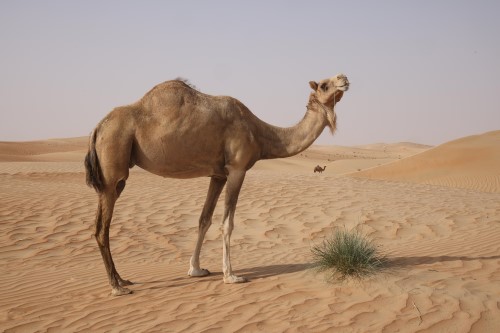Deserts of UAE
In the summer of 2024, we headed over to the United Arab Emirates for a quick adventure into the deserts of Abu Dhabi to locate the Point of Inaccessibility for the UAE. Yes, it would have been cooler in the winter, but where's the fun in that?
The plan was to take a couple of vehicles along metalled road as far as we could, divert into the desert and finish the journey on foot to the final POI.
Deserts of UAE - Full video
The adventure started with a few days acclimatisation in Dubai. Going from the rainy and cold UK, it seemed like a good idea at the time. Then, when the UK had a heatwave, we thought it might be easier to acclimatise than originally thought. But what we hadn't planned on was a heatwave even in the UAE!

One of the things I love about Dubai and the UAE in general is the cosmopolitan feel. The guy who checked me into the hotel was from Kyrgyzstan having arrived in Dubai when his Moscow University place went up in smoke during Covid. A waiter from Nepal told me about how close he came to going to the Olympics as a swimmer. And I played Padel against a man from Tunisia. Apparently, there were 26 different nationalities working in just that one hotel.
This reminded me of a previous trip to Dubai when my two boys were younger. Having had enough of sitting in our rubber rings going down the 'lazy river' in the Wild Wadi water park, we started hitting one another with the rings instead. Before long the entire lazy river seemed to have joined in with at least twenty people tipping others out of their rings and whacking one another with the inflatables.
When the lifeguards finally re-established order we all shook hands and shared a laugh. There were guys from Pakistan, Oman, Afghanistan, Iran, France, India, Lebanon and us from the UK, all having fun together, completely disregarding the war-mongering between our idiotic politicians.
For the Desert Adventure itself, I was joined by a Bahraini, an Omani (both drivers), a Frenchman, a French-Tunisian (camera crew) and an Australian.
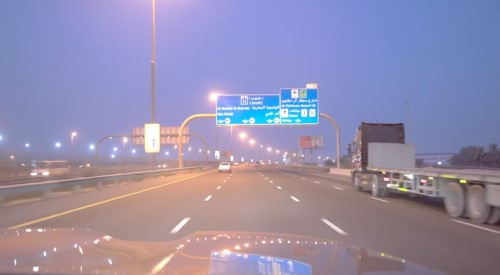
Two cars were required in case of difficulties, like a breakdown. In this day of satellites and GPS devices, getting lost in the desert isn't the biggest danger. It would be breaking down and not being able to call for assistance - though, again, my latest GPS has a satellite messaging facility and SOS button!
The escapade began early in the morning, around 5am, so we could get underway before the temperature built too much. Although it was already into the mid-thirties Celsius.
Our route took us down the E11 (Sheikh Khalifa Bin Zayed Al Nahyan Int'l Road) then on to E65 (Hameen Road) all the way to Al Fathiya where we turned off into the desert. But no sand yet. We came across a stretch of unused, five-lane highway. No traffic, other than a few camels crossing. It was a ghost highway to nowhere!
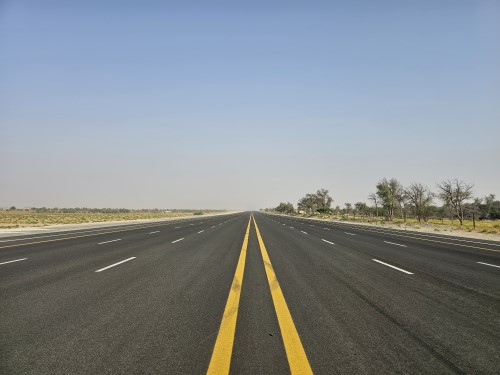
At this point we stopped to deflate the tyres to increase traction and to help stop the tyres sinking into the sand. Lowering tyre pressure increases the surface area allowing the vehicles to 'float' across the surface.
Once in the desert proper, it brought back memories of my trip to Point Nemo. On that expedition, all we could see was sea, sea and more sea, rising up and falling down. In the desert it is sand, sand and more sand, rising up one dune and then falling down the other side, like riding a giant wave. It is genuinely possible to get motion (sea) sickness when driving through the dunes.
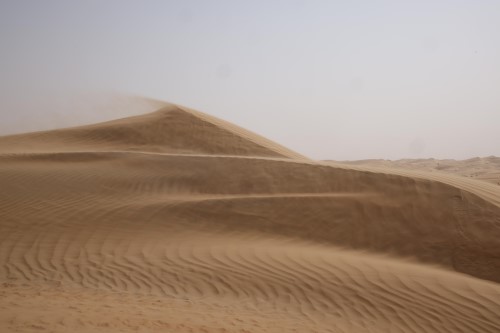
It was a good job that we did take two vehicles. At one point, the lead vehicle bottomed out when topping a dune and became stuck. Digging out the wheels did little, so we had to 'jerk' it free with the other vehicle - hopefully the chases weren't too stressed.
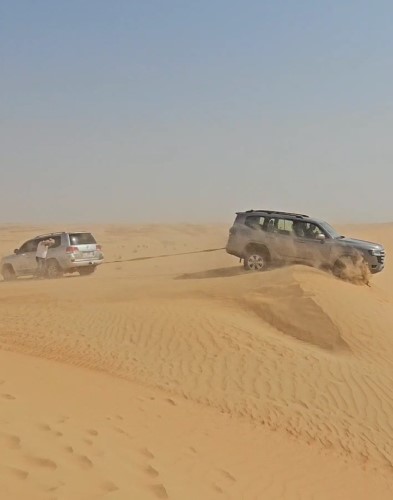
Apart from sand, there is little to see in the desert. We came across the occasional camel. Plus there were occasional tufts of grasses, still remaining after the bizarre flooding in April of 2024. You wouldn't have thought it when we were there. Our instruments had registered "low humidity" from the outset (defined at lower than 40%). But by the time we entered the sand dunes, the instruments gave up as the humidity plunged below 20% and simply recorded "LL". Low humidity causes dry skin, dry or itchy eyes, and infections to spread more quickly. It can also exacerbate respiratory conditions and cause throat pain, especially when combined with wind-blown sand.
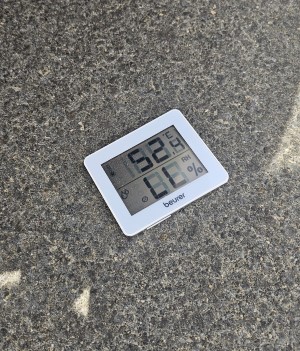
Close to the Point of Inaccessibility we took to foot to complete the journey. The cars remained fairly close, so we didn't need any special equipment for this shortish walk, even though temperatures had now reached 44°C.
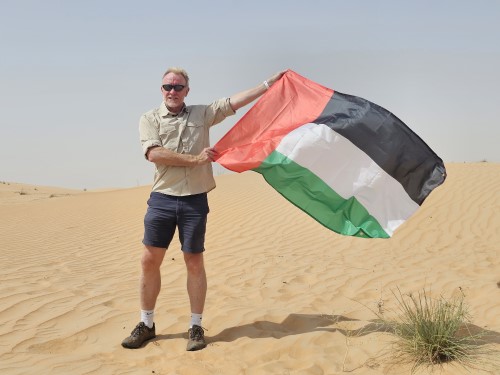
The POI itself is, of course, fairly unremarkable. Just another patch of sand in a huge desert. But it is significant as the point in the United Arab Emirates which is furthest from the ocean or country borders in any direction. When at the Point of Inaccessibility for the UAE, it is at least 81.5km in any direction before you reach the country's limits.
Here is a map of its location between the Point of Inaccessibility for the UAE
Being a Northern Ginger, I didn't spend too long at the final coordinates. Just enough time to take a few photographs and short video before heading back the way we came.
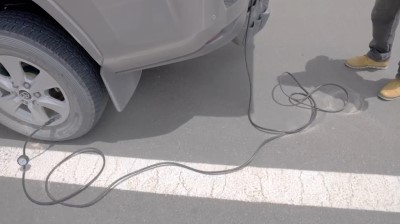
The return trip was without incident. But when we got back to the Ghost Highway and re-inflated the vehicle tyres, we recorded 52.4°C - the highest temperature I think I've encountered anywhere. So, we emptied the sand from our boots and headed back to civilisation and, more importantly, air conditioning!
Many thanks to Jimmy de Paris, Samy Memmi and Simika for photography and videography.
